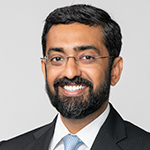Citywire Asia (17.02.2020) - UBP started positioning its discretionary portfolios to look more 'asymmetric' over the medium-term in 2018.
On the whole, this meant being overweight on alternatives, and underweight on global equity and fixed income.
UBP favoured long-short equity alternatives and structured products with an equity underlying, over long-only equities.
For fixed income, it reduced its exposure to non-directional strategies, and opted for more conventional government and credit exposure.
The approach minimises downside risks, given the 'late cycle' nature of the global economy and the valuation of financial assets, said Paras Gupta, UBP's head of DPM for Asia.
'This asset allocation served us well in 2018 as markets suffered a violent sell-off, which was largely driven by then ongoing monetary tightening by the US Federal Reserve, trade-related uncertainty and weakness in global manufacturing,' Gupta told Citywire Asia.
2019 calls
The Fed made an unexpected U-turn in 2019, that resulted in the strong performance of almost all financial assets.
As liquidity conditions were becoming more supportive, UBP partially reduced its exposure to equity alternative strategies in favour of long-only equities.
The bank also allocated less to government bonds, and increased its exposure to corporate investment grade, emerging market and high yield bonds.
But, Gupta said the 'asymmetry' in its portfolio stuck. 'Overall, we continued to maintain 'asymmetry' as a medium-term overlay in the discretionary portfolios, which was the key difference between us and the consensus.
'Throughout 2019, we continued to maintain protection against downside risks, while continuing to capture the upside,' he added.
This was done by pairing conventional equity exposure with put options on equity indices. UBP turned to partially principal protected structured notes with an equity underlying, and at-the-money call options on equity indices.
On hindsight, downside protection was not needed in 2019, as the surge in liquidity lifted all asset classes, Gupta said.
'However, the cost of having such protection was more than mitigated by a strong security selection. Our long-standing growth style equity bias performed strongly.
"We continue to maintain ‘asymmetric’ exposure as we enter 2020".
UBP discretionary portfolios performed in line with an average portfolio in 2019, in absolute terms.
However, discretionary portfolios outperformed on a risk-adjusted basis, due to the lower volatility exhibited by them.
The bank's revenues in Asia, where it saw a 30% growth in DPM mandates, grew 18% in 2019. But its full-year results did not include a breakdown for the region.
On the whole, its AUM rose 10.6% to CHF 140.3bn ($142.8bn), with CHF 107.9bn ($109.9bn) belonging to wealth management.

Paras Gupta
Head of Discretionary Portfolio Management Asia








